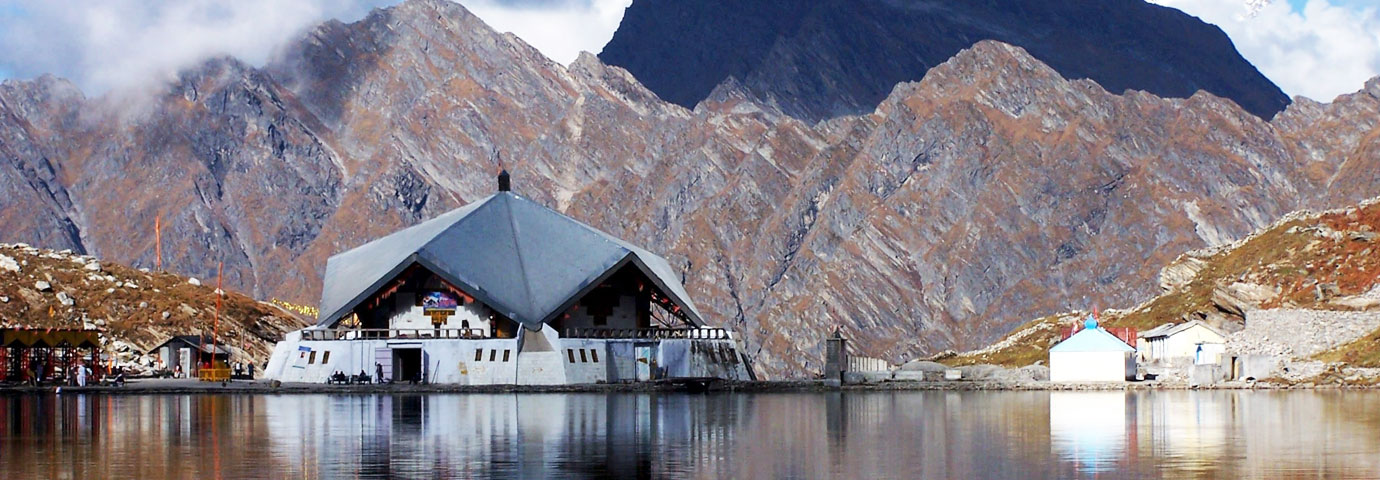Tourists Attractions
Hemkund a pilgrimage of the sikhs rejuvenates your soul. It is a pilgrimage in the traditional mould; there are no hotels, no restaurants, no mechanized transport, and not many chai shops either. Hemkund is a two-day walk from the nearest road head. If one cannot walk, one can at best ride a dubious looking pony. Food and accommodation is provided by two gurdwaras, free of cost to the pilgrims. The greatest enemy of spirituality, commercialism, has been minimized to such an extent that the genuinely motivated pilgrim does not even notice it. Staying at the gurdwara, one cannot help getting affected by their religious fervor, and that is probably the main reason for this pilgrimage having retained its austere character.
The trek to Hemkund begins at Gobindghat, a small settlement in the valley of the river Alakananda. The settlement comprises mostly of the buildings of a gurdwara, which is built at the spot where the Bhyundyar Ganga, a small river emanating from the glaciers that surround Hemkund, meets the Alakananda. The pilgrims usually arrive directly from Gobindghat and spend their first night in the mountains in the gurdwara there. As soon as the pilgrims arrive, they are ushered into the langar (the eating place).
The gurdwara is well equipped to accommodate a thousand pilgrims in its four large buildings. All the rooms, although not furnished, are carpeted and quite cosy, especially the ones facing the river. Mattresses and blankets are provided by the gurdwara too.
Ghangharia - From the bridge cross the Alakananda (at Gobindghat), it is 14 km to the next settlement, Ghangharia, or Gobind Dham as the Sikhs call it. Ghangharia is actually a large meadow; a tourist rest house and the gurdwara are the only building of any significance. The rest are just temporary shacks, occupied only occasionally by nomadic shepherds or some shopkeepers who come during the pilgrimage season. An experienced trekker may find the walk to Ghangharia very easy; the track runs all along the Bhyundyar Ganga, ascending and descending at regular intervals, thus giving the trekker ample respite from both types of strains. One passes through a varied forest of many types of trees and several meadows covered with dandelions. The forest floor is thick with ferns and huge rocks covered with many types of moss. There are two quaint villages en route: Pulns, 3 km out of Gobindghat, and Bhyundyar, just 5 km short of Ghangharia. The walk, though difficult, is nevertheless refreshing; one is awestruck with rapturous exclamations over the pristine beauty of the mountains and springtime flowers.
The gurdwara at Ghangharia is placed strategically at a point where most pilgrims are too tired to go much further for the day. A particularly strong trekker might go up to the summit that very day, but he wouldn't have much time to spend there because the weather turns bad every afternoon and there is no possibility of a shelter at the summit.
However, when the Gurdwara Hemkund Sahib is officially open, one might be able to spend the night at Ghangharia and thereby have the whole of the next day for Hemkund alone. The gurdwara at Ghangharia gives an even stronger impression than the one at Gobindghat of being specifically created to take care of the pilgrims. The langar is kept open from dawn until late in the evening and every pilgrim is provided with a mattress and blankets in one of their many dormitories.
From Ghangharia, Hemkund is only 5 km away. However, the journey is quite arduous because of a steep gradient. The trek from here to Hemkund is through forests of pine and rhododendron where wild roses, ferns, and alpine flowers bloom. The surging waters of the Lakshman Ganga are also visible.
The Hemkund Lake is about 2 km in circumference. One would be gasped in awestruck wonder at the first sight of Hemkund. The frozen lake and all the virgin snow around is a surely heavenly sight. The clear, still water of the lake reflects the Saptashringa Peaks (5,500 m) that surround it. Bits of ice float on the waters between July and September, the best season to visit Hemkund. The rock-strewn shores of the lake are covered with moss and flowers in bloom. As far as the eye can see, down the length of the valley, up the lower mountain slopes, there are flowers and flowers, and still more flowers. More than a thousand Himalayan varieties of flowers, ferns, and herbs are massed in the valley in all their frail beauty and scented sweetness. The waterfalls flashing white against the mountainsides, nothing is more striking than the valley's absolute bloom of stunning perfection.
There would not be another living thing in sight. The only sound one can hear would probably be one's own sound. Visiting this place could be regarded as the encounter with the personification of absolute peace and raw natural beauty. It does not take much imagination to understand how the place came to be regarded as a spiritual power place.


